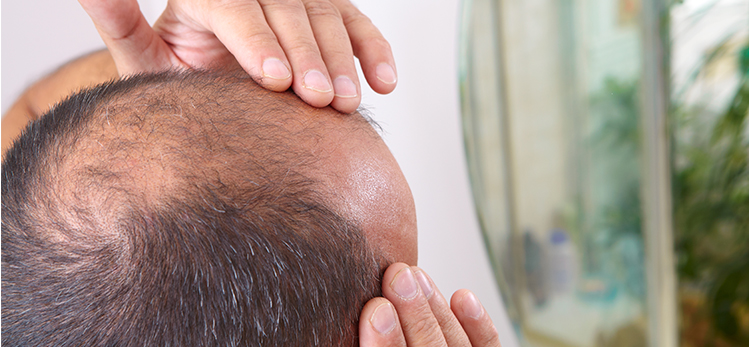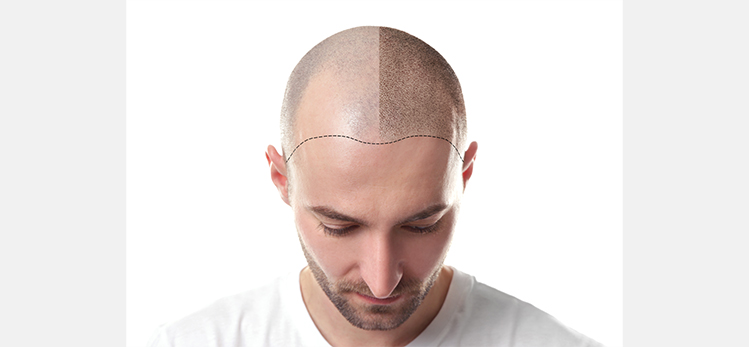Baldness Treatment – What are different options?
Hair loss is a natural phenomenon that gradually increases as people age. As you become older, the follicles on your scalp become less active, resulting in male or female pattern baldness . It affects everyone - the rate of hair loss is higher in some individuals than in others. It depends on the genetics of the person.
Sometimes, the onset of baldness happens earlier in some individuals, with causes rooted in stress, lifestyle, diet, or sleeping habits. The good news is that today, there are many forms of treatments available to cure baldness. Ranging from oral medication to topical solutions and even surgical methods, you can get your hair back with these treatments.
Male Pattern Baldness. 95% of hair loss in men happens because of Male Pattern Baldness (MPB). It can be daunting for men to deal with hair loss, especially in their professional circles, where appearances have a lasting impact. If your hair is thinning out and you don't know the reason, seek the help of a dermatologist to find out if it is the onset of MPB (which sometimes begins as early as age 21).
Female Pattern Hair Loss. Unlike men, females don't experience baldness - rather, their hair tends to thin out and become stringy, wiry. It usually starts from the hair parting getting wider and the hairline near the temples receding. Female pattern hair loss is a progressive condition and will continue until treated. If you think your hair has thinned out in the pattern discussed above, it is best to visit a doctor to get a diagnosis.
Let's now see the treatment options advised by a dermatologist to you for androgenetic alopecia.
Treatments Available for AGA
While ageing causes hair loss that isn't reversible, there are treatments available to slow it down, stimulate the growth of new hair, and even improve density with the assistance of medical technology. Here is a list of treatments available for AGA which are selected as per the discretion of the treating dermatologist.
Oral/Topical Finasteride. Finasteride is a drug that is prescribed specifically to hinder male pattern baldness. It works by inhibiting the conversion of testosterone in DHT, which is the prime cause of male pattern baldness. By orally ingesting this drug in prescribed quantities, males can fight MPB. Topical options of Finasteride are also available in the form of sprays or oil mixes, which can be systematically applied to the scalp for checking hair loss before complete baldness sets in.
Hair Transplantation. Hair transplantation is basically the last resort when no treatment works. In this treatment, a graft of hair is removed from a portion of your body where there are healthy follicles (referred to as "donor site") and grafted into the bald patch. This method requires time, patience, and cost as well since it is a precision surgery. There is a lot of aftercare involved in hair transplantation, although the results generally are good.
Low-Level Laser Therapy This is also known as red light therapy or cold laser therapy. When weak hair follicles are exposed to photons, they get absorbed and help stimulate the follicle back into health. This helps regrow hair in the follicle that was slowly becoming inactive. This procedure is non-invasive, therefore, preferred to the surgical hair transplant therapy for hair growth
Other Types of Alopecia and Their Treatments
Listed below are some other forms of alopecia, followed by the treatments and medications that dermatologists prescribe for them respectively.
Involutional Alopecia- The kind of semi-baldness where the hair begins to gradually thin out as you age is classified as involutional alopecia. There are no specific patches of hair loss on the head, just an overall thinning because of more and more follicles sliding into the resting phase.
Treatment- This rarely results in baldness. There is no known treatment for this condition.
Alopecia Areata- Sudden onset of patchy baldness in children or young adults is classified as alopecia areata. It typically lasts for a few years after which hair growth returns. If, however, you find it difficult to cope with such baldness, you can visit your dermatologist.
Treatment- Typically, a dermatologist uses corticosteroids injections as one of the treatment option.
Alopecia Universalis- In this kind of alopecia, there is hair loss all over the body - pubic hair, eyebrows, eyelashes and body hair including the hair on the scalp. Sometimes regrowth of hair occurs after several years in most individuals suffering from AU.
Treatment- Currently, there are no treatments or therapies that are FDA approved for treating this condition. Therapies are in progress that show promising results, like photodynamic therapy or the use of steroids. However, none of them is approved by any authority.
Telogen Effluvium- This is a kind of temporary hair thinning which occurs due to changes occurring in the hair's growth cycle . This is when a high percentage of follicles on your head enter the resting phase at the same time, and there is significant shedding which causes hair thinning.
Treatment- Telogen Effluvium can be controlled by consuming proper nutrition and maintaining a healthy, clean scalp.
Scarring Alopecia- Skin problems such as scalp acne, cellulitis, folliculitis, lichen planus or lupus cause permanent damage to follicles and can lead to irreversible baldness in affected areas.
Treatment- For scarring alopecia, specialists say that hair transplantation or surgical methods may be the only way to get hair back in the affected areas.
With the technology available today, it is possible to treat hair loss and even baldness with safe, reliable methods and give great results.
Hair loss doesn't only cause thinning of hair; it also causes confidence and self-image consciousness in some individuals. While it is a matter of superficial beauty, good hair does help people exude confidence and expression more freely. Treatments available for hair loss today are many and affordable as well. Maintaining a healthy and stress-free lifestyle and nutritious meals are also very important for optimal hair care.
Visit your dermatologist for any hair fall related complains to get optimal diagnosis and management plan.
Myth Busters HairFall
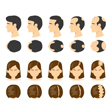
Androgenetic Alopecia - Everything You Need To Know
Have you been experiencing excessive hair fall over a prolonged period of time? It could be an early sign of androgenetic alopecia. It is a hair loss disorder common in both genders and can lead to progressive thinning and even baldness in some patients if not caught and treated early.

How To Make Hair Grow Faster For Men
A head full of healthy hair is a matter of confidence. Hair has its own mechanism of growing and shedding, and it is when this mechanism is thrown off that growth is hindered. Especially in the case of males, hair growth faces a lot of hiccups that can easily be managed.
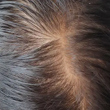
Female Pattern Baldness - Causes & Treatments
Have you suddenly noticed an increase in the number of hair strands on your pillow in the morning? Or is your ponytail getting thinner by day? Well, you might be suffering from female pattern baldness. While that does sound scary, identifying it early on is key to treating this condition effectively. So keep reading to know what this is, how you can identify it, and most importantly, what treatments you can avail of to get your beautiful lustrous hair back.
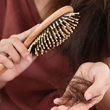
What Are The Reasons For Hairfall?
Almost everyone experiences some amount of hair thinning over the years. Shedding around 50 to 100 single strands of hair per day is considered normal. However, losing more than 150 strands a day, experiencing sudden thinning, or developing circular bald patches on your scalp are reasons for concern. Hair loss occurs when new hair doesn’t grow fast enough to replace the amount of hair you lose daily. Hair can fall due to various reasons, with hereditary hair loss and poor nutrition being the most common hair fall reasons.

Expert Approved Tips For Hair Growth
What can be more debilitating than seeing hundreds of hair strands shedding from your scalp every time you brush your hair? Also, excessive molting occurs during seasonal changes that can be very stressful for you. Although it’s okay to lose between 50-100 strands every day, according to the American Academy of Dermatology, the problem occurs when you start shedding more than normal. But that doesn’t mean you have to feel helpless as there are ways to grow your hair back. Even if you are coping with baldness or alopecia, certain hair growth tips from dermatologists can come to your rescue. Read on to discover how these tips can be your savior when abnormal hair fall problems are in sight.
Trending Videos
+ 9 Sources
LMRC - GGI-CO-A2-DMA-300026127-300026127-WM-J21-282
© 2021 Dr. Reddy’s Laboratories Ltd. All rights reserved.
